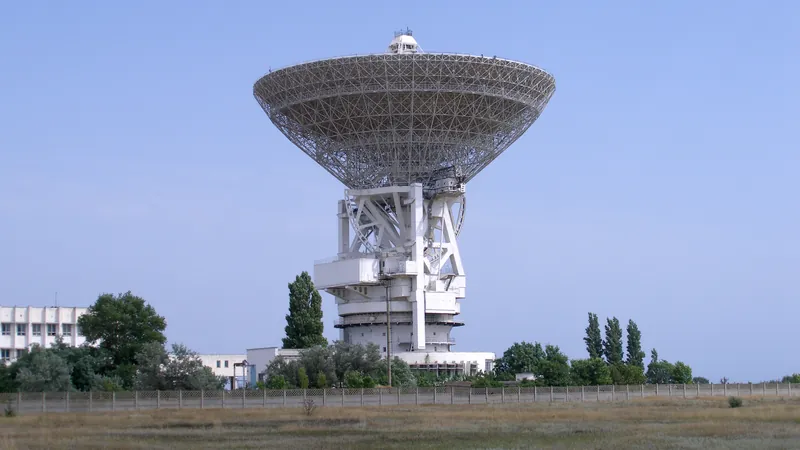
Ukraine Strikes Back: Massive Radio Telescope Used by Russia Up in Flames!
2025-09-18
Author: Benjamin
In a bold move, Ukraine has taken down a colossal radio telescope located in Crimea, a site previously known for its missions to Mars and Venus and efforts to communicate with extraterrestrial life.
A Strategic Target
The Ukrainian defense forces successfully executed a drone strike on the 230-foot (70 meters) antenna dish, aiming to thwart the Russian military's attempts to utilize it for offensive operations against Ukraine. This imposing RT-70 radio telescope had been in Russian hands since Crimea's annexation in 2014, and reports indicate that Russia made significant upgrades to repurpose it for military communications.
The Power of the RT-70
Not just a relic of scientific exploration, the RT-70 had crucial military applications, contributing to the GLONASS satellite navigation system—which serves as Russia's answer to the American GPS—boosting its accuracy by an impressive 30%.
Dramatic Drone Footage Surfaces
The destruction of the 50-year-old telescope was immortalized in dramatic drone footage, showcasing the moment a drone collided with the vital 200-kilowatt radio receiver at the core of the dish. This receiver, a product of a 2011 Moscow upgrade, is considered irreplaceable, meaning repairs are unlikely any time soon.
Legacy of Exploration and Contact
Originally one of three RT-70 telescopes established in the 1970s as part of the Soviet Deep Space Network, this facility has a storied past in astronomical research. It was crucial for the Soviet Venera missions exploring Venus in the late 20th century.
In more recent times, the telescope served as a launching pad for over 20 messaging campaigns aimed at contacting alien civilizations, sending signals toward potentially habitable exoplanets. Some of these messages are still en route, with one expected to reach its target near the star Gliese 581 by 2029.
Impact on Astronomy
The destruction of the RT-70 telescope marks a significant loss for both military and scientific communities. In addition to its military utility, the antenna played a role in major European Space Agency missions like Mars Express and Rosetta.
The Crimea Conundrum
Following its annexation, Crimea has become a contentious zone filled with significant scientific assets, now largely under Russian control. Ukraine’s own Shain mirror telescope and various observatories have also fallen into Russian hands, while the Giant Ukrainian Radio Telescope in Kharkiv suffered major damage during military occupation last year.
As conflicts continue to unfold, the sky's the limit for what may come next in this high-stakes battle for control over these crucial scientific and military facilities.









 Brasil (PT)
Brasil (PT)
 Canada (EN)
Canada (EN)
 Chile (ES)
Chile (ES)
 Česko (CS)
Česko (CS)
 대한민국 (KO)
대한민국 (KO)
 España (ES)
España (ES)
 France (FR)
France (FR)
 Hong Kong (EN)
Hong Kong (EN)
 Italia (IT)
Italia (IT)
 日本 (JA)
日本 (JA)
 Magyarország (HU)
Magyarország (HU)
 Norge (NO)
Norge (NO)
 Polska (PL)
Polska (PL)
 Schweiz (DE)
Schweiz (DE)
 Singapore (EN)
Singapore (EN)
 Sverige (SV)
Sverige (SV)
 Suomi (FI)
Suomi (FI)
 Türkiye (TR)
Türkiye (TR)
 الإمارات العربية المتحدة (AR)
الإمارات العربية المتحدة (AR)